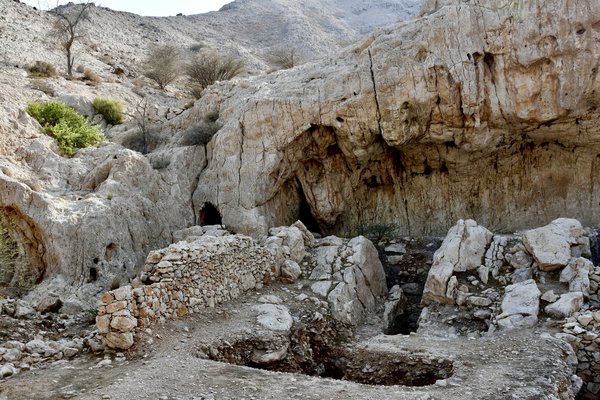United Arab Emirates
Faya Palaeolandscape
The Faya Palaeolandscape comprises an archaeological site from the Stone Age in a desert landscape.
Its periodic occupation shows how humans adapted to extreme climatic conditions. The oldest archaeological layer dates back approximately 210,000 years.
Community Perspective: Head for Mleiha Archeology Center: there's a museum and you can get on a (pricey) guided tour by car along the excavations.
Site Info
Official Information
- Full Name
- Faya Palaeolandscape (ID: 1735)
- Country
- United Arab Emirates
- Status
-
Inscribed 2025
Site history
History of Faya Palaeolandscape
- 2025: Advisory Body overruled
- ICOMOS advised Not to inscribe
- 2025: Inscribed
- Meets criterion 3 and 4
- 2023: Added to Tentative List
- Added to tentative list
- Type
- Cultural
- Criteria
- iii
- iv
Links
- UNESCO
- whc.unesco.org
- Official
-
- moccae.gov.ae — Mleiha Archaeological Centre
- buhaisgeologypark.shj.ae — Buhais Geology Park
All Links
UNESCO.org
- whc.unesco.org — whc.unesco.org
Official Website
- moccae.gov.ae — Mleiha Archaeological Centre
- buhaisgeologypark.shj.ae — Buhais Geology Park
Community Information
- Community Category
- Archaeological site: Prehistoric
Travel Information
Recent Connections
-
Historic climate change
Crit iv: The geological, geomorphologic…
-
Cultural landscape not recognized
Nominated by UAE as a CL, but ICOMOS "c…
-
Middle Pleistocene
"The archaeological sites and palaeoenv…
Connections of Faya Palaeolandscape
- Geography
-
-
Desert Cultural Landscapes
"an exceptional example of a Stone Age desert landscape" (ICOMOS ev)
-
- History
-
-
Historic climate change
Crit iv: The geological, geomorphological and hydrological processes and features include alternations of dry and wet conditions while hydrological processes involve erosion and deposition of sediments and archaeological elements. These processes were largely driven by changes in palaeo-climatic conditions (OUV)
-
Neolithic age
"one of the earliest records of human occupation of the area from the early Middle Palaeolithic to the Neolithic" (ICOMOS ev)
-
Palaeolithic and Mesolithic
"The archaeological sites and palaeoenvironmental findings are dated to between 210,000 and 6,000 years ago." (OUV)
-
- Ecology
-
-
Dunes
the dunes of Rub’ al-Khali desert (ICOMOS ev)
-
- World Heritage Process
-
-
Controversial at inscription
-
Extension Supported
"Also calls upon the State Party to initiate the development of a potential serial or transboundary nomination, in consultation with other States Parties/regions, which contextualizes the Outstanding Universal Value of Faya within broader migration and adaptation routes out of Africa" (Decision 47 COM 8B.12)
-
Cultural landscape not recognized
Nominated by UAE as a CL, but ICOMOS "considers that the claims for the interconnection between natural and cultural elements are not sufficiently substantiated to justify considering the nominated property as a cultural landscape." (also not marked as such on UNESCO website).
-
- Human Activity
-
-
Hunter-gatherers
"The preserved evidence on-site illustrates the evolution of societal structures, from hunter-gatherer groups to pastoral nomadic herders" (ICOMOS ev)
-
- WHS on Other Lists
-
-
Located in a TCC Territory
Sharjah
-
- Timeline
-
-
Middle Pleistocene
"The archaeological sites and palaeoenvironmental findings are dated to between 210,000 and 6,000 years ago." (OUV)
-
News
No news.
Recent Visitors
Visitors of Faya Palaeolandscape
- Alexander Lehmann
- Christoph
- Christravelblog
- Els Slots
- Errol Neo
- henryjiao18
- Jay T
- John Smaranda
- Kevin McFarland
- Kim, Soo-youn
- Kyle Magnuson
- Loic Pedras
- Maciej Gil
- Nicolas
- PabloNorte
- Philipp Peterer
- Piotr Wasil
- Randi Thomsen
- Roger Ourset
- stephanvermeulen
- Svein Elias
- Szucs Tamas
- Valentina
- Wojciech Fedoruk
- Xander Huang
- Xiquinho Silva
- Zoë Sheng
Community Reviews
Show full reviews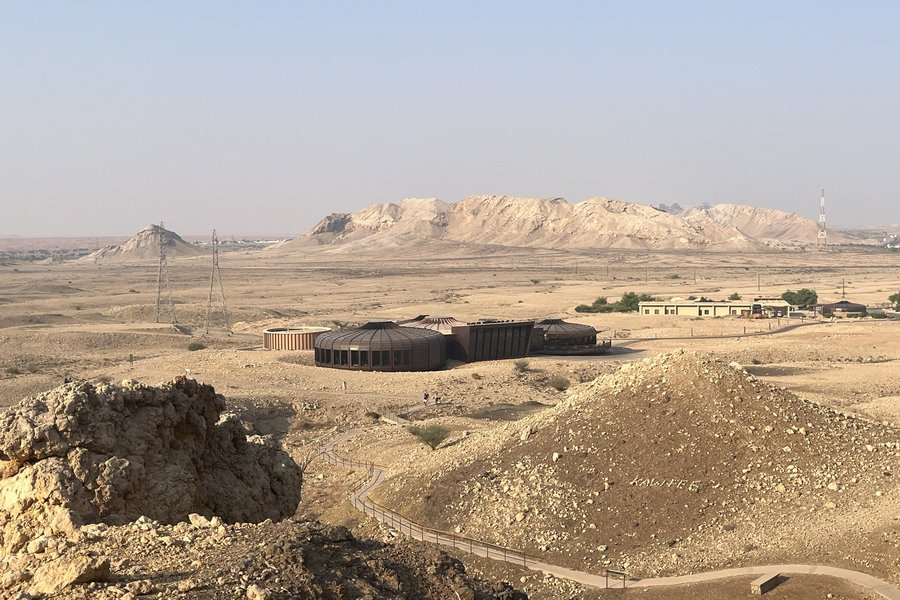
I visited Faya in November 2025 on the UAE road trip with Philipp and Jay, and I am the first to report back on it since its inscription this summer. We found out that, as is so often the case, reviews from before that milestone may not accurately reflect or depict the WHS. In a way, you’re just stabbing in the dark when visiting "too" early.
With the core zone mapped and all official documentation available, it is clear that the Faya Palaeolandscape focuses on the very early history of this part of the Arabian peninsula: it is foremostly an ‘early man’ site (Paleolithic and Neolithic, 200,000 - 6,000 years ago), which has seen intermittent human occupation during the Bronze and Iron Ages as well. The archeological sites of the latter two periods can be found within the core zone, but do not form part of the OUV.
Explicitly excluded from the OUV is the Pre-Islamic period (300 BCE - 300 AD). This has had a strong effect on the boundaries of the core zone and the flagship monuments: the Mleiha Palace, Fort, Subterranean kitchen and other remains from that period, situated ‘across the road’ from the main area, are all out. They still can be found on the Tentative List as Mleiha.
This scope confusion is aggravated by the Mleiha Archaeological Center, which is the main visitor center for both sites. To get a good look at either one, you need to join their archeology tour. At …
Keep reading 1 comment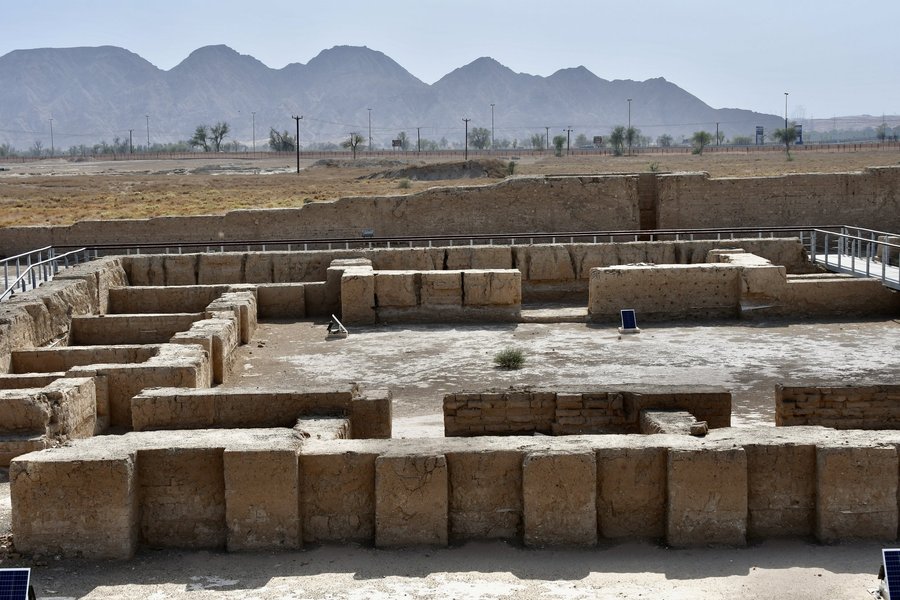
Visit – June 25
This summer our first goal was Kenya. With Etihad we landed in Abu Dhabi a few minutes late to reach our morning connection to Nairobi. The next available flight wasn’t until after midnight. We had originally planned a mini-meetup with Els in the afternoon to visit to Nairobi National Park, so it was a bit of a blow.
Etihad provided a hotel for the day – but we thought: why not rent a car and make the most of it?
Mleiha Archaeological Site, part of the Faya Paleolithic Complex, is up for possible World Heritage inscription at this year’s session. Although the ICOMOS evaluation recommended not to inscribe, we still thought it was worth a visit.
It’s about a two-hour drive from Abu Dhabi, and we arrived at Mleiha Archaeological Centre early afternoon – in a scorching 47°C heat. The visitor center is modern and well-organized. We signed up for a guided tour. The tour started with an indoor visit to the museum, which included a short film and a great introduction to the site.
The exhibition highlights that this area holds evidence of human activity dating back over 130,000 years, with near-continuous settlement from the Stone Age through the Bronze and Iron Ages, up to the pre-Islamic period. One of the themes emphasized by the guide was early human migration from Africa. During periods of lower sea levels, it was possible to cross the Red Sea – and the Mleiha area …
Keep reading 0 comments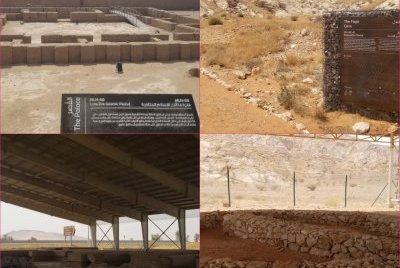
You'll be heading for the Mleiha Archeology Center for this one which I visited twice in the last few years. First was a bit of a bust. They had lots of activities for Wadi Bashing and no tours ready to take me out so I visited the museum only which is not bad in any way but the main findings are out in the open. So since my visit 3 years ago the bashing got outlawed, new findings made some signs outdated and hardly anyone comes out here anymore. You'll be asking for a tour and they just arrange with available staff.
I left after lunch with the option to view the museum but I had already reglanced that I didn't find it necessary. It's included and the staff is happy you go in, watching the camel/horse burial etc. For the actual tour you nowadays fork out at least 130 DH per person.
The tour is via a car because it's so hot. You first go to the ancient sites in the West and then cross over to the new ones at the East side. Those are so fresh that even a road planned to go through here was remodeled when they discovered artifacts. The East is maybe 10 years old and they still have a lot to find. You also won't see much at the site here but some basic layouts. The floods in April 2024 took their toll and most of the walls are now destroyed. …
Keep reading 0 comments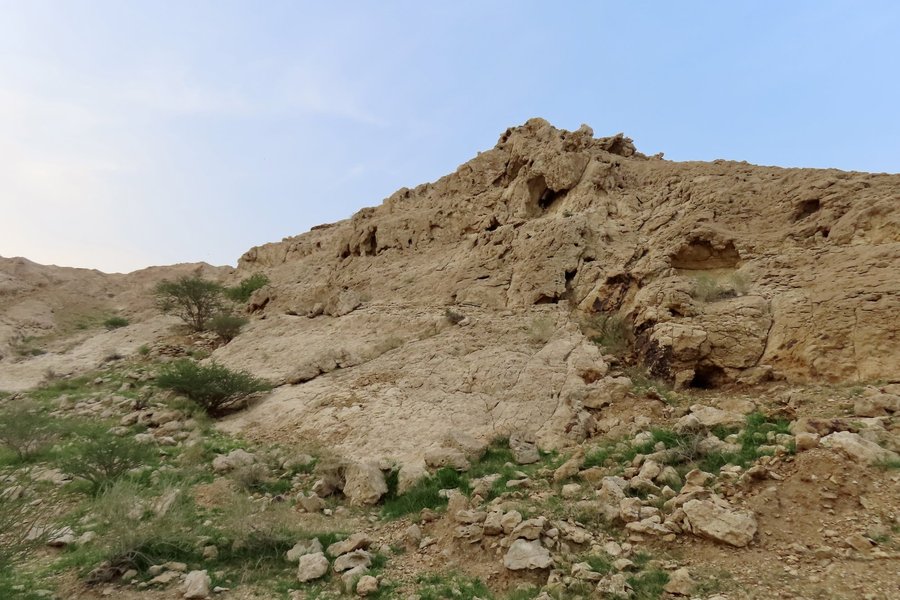
ICOMOS called this nomination 'premature' and of 'potential importance'. I suppose the UAE was not satisfied with waiting and thus campaigned hard toward inscription.
I have little experience in visiting prehistory landscapes such as this and therefore I was grateful for our tour guide. We hiked starting from the remnants of a spring that was used by humans over many thousands of years. From here we hiked the gently incline toward the caves. Because of recent rains before our visit, much of of the desert landscape was partially green with new plant growth. The caves were in fact human occupation sites and excavations have been carried out to confirm how these caves were used throughout the millennia of the Paleolithic era. During this short hike (about 30-45 minutes) with stops, you will see 3 caves and some pleasant views, one of the caves is possible to enter, though it's a tight fit.
A short drive from this site is where some of the most surprising and exciting discoveries have been made, almost exclusively in the last 5-10 years. At this location is a partially dug out pit where you can see the stratified layers, which benefit from a color coded measurement that dates the site to over 200,000 years of mostly continuous human presence and adaption to the landscape. The guide explained some of the new discoveries, which are being published so often now that the information on site has to be updated frequently. A lucky bonus for us, our …
Keep reading 0 comments
